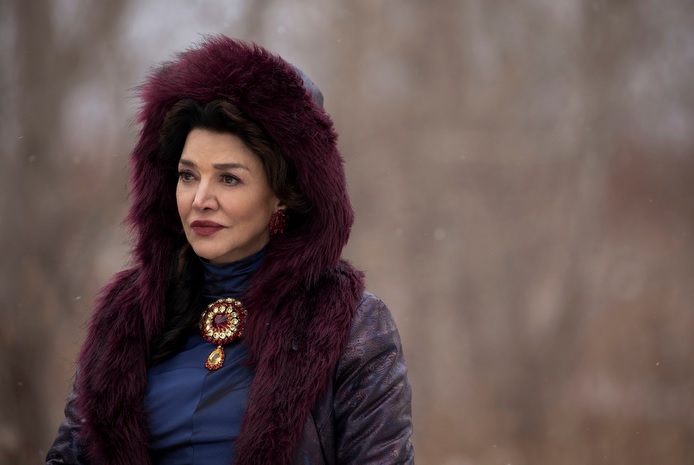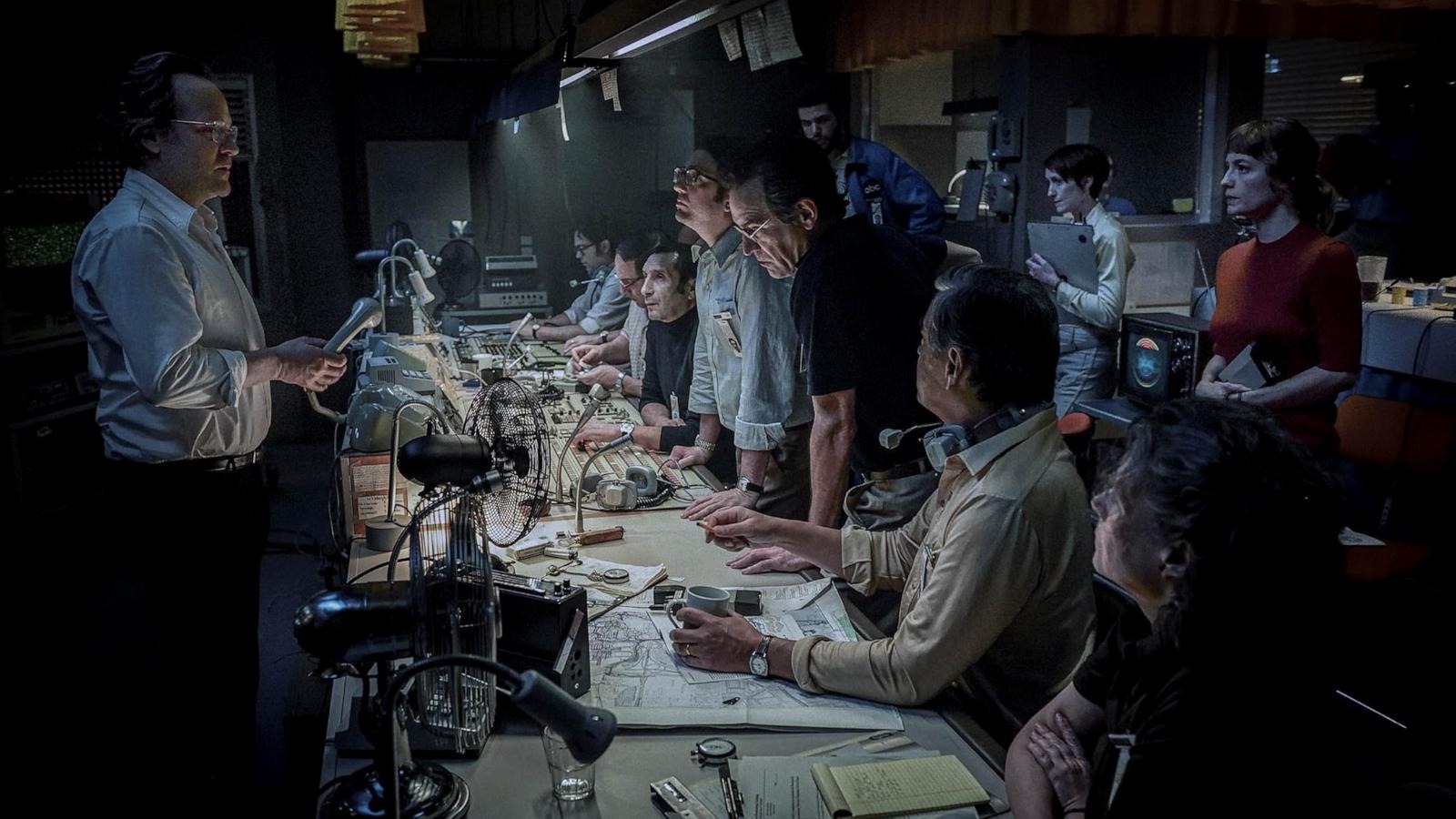![]()
The elusive “Fargo†suitcase of cash doesn’t exist in reality. But, a Japanese woman believes it to be true.
Based on a true story or rather urban legend, “Kumiko, The Treasure Hunter†is a dark comedy about a frustrated Japanese office lady whose imaginations and obsessions over a “Fargo†VHS tape that she mistook as a documentary. She became fixated on a suitcase of stolen cash that was buried somewhere in North Dakota. With her mundane life in Japan, she embarks for America in a dangerous adventure to seek out this treasure.
The film stars Rinko Kikuchi (“Babel,†“Pacific Rimâ€) in the title role.
Latino-Review had an exclusive phone interview with the screenwriter Nathan Zellner on the story. He is the brother to co-writer/director David Zellner for the movie.
We discussed many things about the film, including the culture, authenticity, love for Fargo, the urban legend and even Bunzo the Bunny.
“Kumiko, The Treasure Hunter†is currently in limited theatrical release in Los Angeles and New York. It will be expanded to more cities nationwide in the following weeks.
Read the interview below.
Latino-Review: I didn’t realize that this was based off a true story. When did you first heard of this story?
Nathan Zellner: We came across this Internet rumor right after it happened in 2001. It was about this woman travelling from Japan to Minnesota to search for treasure from the film. There wasn’t really any other information available. Before, not like social media nowadays, things can infinitely blow up and dissected. We were really confused and intrigued. There was a lot of chatter online about the real story, information available and why someone would do this.
Since we couldn’t find the information entirely—we started creating this backstory to get a character piece out of this. Years later, we had to circle back to see if there’s any new information that has come up. The story did get debunked and turned into an urban legend. The real story was less fantastical. She wasn’t looking for treasure. There wasn’t that woman who made that journey and got lost in the wilderness. So the whole element based on a true story added something to it.
We were so invested into it and were in love with the character. It made us like our version of the truth. This is our entry into the whole mythology.
Latino-Review: I liked your version of the story too. Did you guys were disappointed that the urban legend wasn’t true?
Nathan Zellner: Not disappointed. At first, we were surprised since we went with our version for so long what we knew to be true. It made us love the whole situation even more, because there were these different layers on what is the reality and the movie world. It’s also on how people communicate and on how it breaks down to turn it into something else. It’s all in the plans in our script already. This just added an extra layer that it’s really an urban legend.
![]()
Latino-Review: Now why did you guys sit on it for such a long time? It was over ten years ago?
Nathan Zellner: We were starting out as filmmakers when we first wrote it. It was a difficult movie to put together. It was weather dependent. It was small budget. We were shooting in two different parts of the world. The plan was to shoot both in Japan and Minnesota. We wanted to make sure we were authentic on how we make the film. There was this reality versus the movie world.
We wanted to make [a movie] with a naturalistic tone. We had to shoot the movie in Japan. We wanted to capture the real moments there. Minnesota also needed to be a brutally cold winter. We were trying to get all the pieces together and in the meantime—we were doing micro-budget movies, shorts and getting more exposure in the festival scenes. We wanted to work on the types of films we wanted to work on.
So when we kept on circling back to the script, it eventually became our own obsession. We were definitely passionate about it.
Latino-Review: I was indeed surprise towards the authenticity of your movie. Basically, it was like two different movies. The first half was in Japan while the second half was in Minnesota. What kind of research did you have to do to make everything so accurate like from the Japanese corporate culture to the friendliness of people in Minnesota?
Nathan Zellner: [Chuckles] As we’re developing our character, we did a ton of research on Japanese culture. We don’t speak Japanese. We did do a lot of research into this office lady culture. It’s more of a traditional corporate environment. Funny enough, while we were scoutingand the office we ended up with, [operated] exactly just like the movie. The women were wearing uniforms. They were secretaries and administrative assistants who play a role towards the bosses. So we did do a lot of research culturally with Japan.
Now we’re from Texas, but we were born in Colorado. We were exposed to this Midwest life and heard of this Minnesota nice. We took to developing the characters in Minnesota.
Production-wise, we did it as two separate films except from myself, David [Zellner], our producing partner Chris Ohlson and [cinematographer] Sean Porter. The cast and crew were entirely local to Japan and Minneapolis. So we went over to Japan and very opened to not making into a tourist version. It reality, it was a really quiet city. There are a lot of traditions in society over there. It was very, very specific and unique. We were very opened to the crew over the feedback with cultural things or even to the relationship with her mother. We talked with people about the kinds of apartments for a woman who is single in her 20s would live in.
We tried to learn from there and they helped us shape this project on what we wanted to get. I think that’s one of the reasons why both crews were really excited to work with us. They gave us 110 percent to go above and beyond. They all understood we were going for this naturalistic feel. It was a really good collaboration.
![]()
Latino-Review: One of the most amazing things you had to do was to create a map or simply retracing the footsteps through the “Fargo†movie. How surreal was that process and how many times did you end up watching “Fargo?â€
Nathan Zellner: [Laughter] We’re fans of the film and with the Coen [Brothers] for sure. When we wrote the script, it was right at the beginning of the switching from VHS to DVDs. We grew up as VHS kids. We love going to the video store. There’s always something about having a physical tape. The one thing we liked about this urban myth, as we thought, was going on some kind of treasure hunt. It’s like some El Dorado or some lost object/treasure that doesn’t really exist in reality. Someone is willing to travel across the globe for it.
We wanted to have this [physical] thing that she could hold on to like an embroidered map. It’s much cooler to have than just a piece of paper that she would’ve just printed up on the Internet. Every little clue and every little device for her journey must have this fantastical quality that she could hold on to.
For “Fargo,†it was always a conduit for her journey. It’s the buried treasure for her to go after to find it. We focused on the money that was buried in the snow. We probably watched that more times than we’re willing to admit. We got very detailed on how many fence posts there were. We definitely dissected it by watching from the film.
Latino-Review: Now watching the scenes of Minnesota, it almost felt like I was watching “Fargo†again especially with the characters. Is it this Minnesota nice that just portraying these characters out there? Or did you guys purposely created a comedic element that way?
Nathan Zellner: It was definitely not intentional. Both films are stylized in their own way. Coens’ film is stylized with the accent. Minnesota nice is how accompanying the people are and how eager they are to help you. It’s something that is inherent about that part of the country in the Midwest. They’re much opened to strangers and helping people in need. It gets a little quirky especially for those who are not used to it. We definitely wanted to do an homage in that way to “Fargo.â€
Latino-Review: Why did you think Rinko Kikuchi was the perfect actress to play Kumiko?
Nathan Zellner: When we first writing it, we haven’t heard of her yet. We were researching and trying to figure out some Japanese actresses on who would be a good fit. We watched a lot of foreign films. Trying to find someone who was known to American audiences was kind of difficult.
We first heard about her through a film called, “Babel.†She was nominated for an Academy Award. After that, we got in touch and met her. We talked to her about the project. Instantly, we bonded and very similarities with a lot of the same filmmakers and the approach towards filmmaking. It was something amazing about her that makes her unique as an actress. She has an interesting look.
Her character has a certain physicality that’s very different and unique. We were creating a character that doesn’t have a lot of dialogue and there were issues with communication. So she has to go through some personal problems and putting the pieces together for a treasure hunt.
That’s the real unique thing with [Rinko] was with a lot expressions and with a lot acting. You’ll see it in the way she walks and on the way she looks. She also has a great comedic timing. Putting it all together, she was like the perfect fit.
![]()
Latino-Review: What was the symbolism behind the red hood?
Nathan Zellner: Originally, when we were writing the script and the production standpoint, we were thinking about certain things. We got to Japan and noticed everyone was wearing a lot of dark colors, particularly with a lot of blacks. The idea for her wearing red is so that she would stand out. And again, we wanted something that would work when she got to Minnesota to stand out in the snow. We liked the idea that it was her armor—so with the idea of this red hoodie.
Then later, when we’ve done Q&As, we answered a lot of these questions. We liked fairy tales like the Little Red Riding Hood—the girl getting lost in the woods with the red hood. It was an interesting thing on how people were trying to pick that out. We also talked about the movie “Don’t Look Now†that has a predominant red hood in it. There was a lot of visuals that can connect with that.
Latino-Review: It must be a lot of our imaginations running amok on that red hood.
Nathan Zellner: Yeah. [Laughter]
Latino-Review: Nathan, can you talk about your future projects after this?
Nathan Zellner: This one took so long to get off the ground. We’re working on a new script right now. We come from a DIY filmmaking background, so we tend to be pretty versatile. There are a couple of things tend to smaller or bigger. It’s just the matter on which one we can get someone to be interested in. Hopefully, we’ll shoot something this year. We like to make these character driven pieces where you’re watching somebody working through their issues and problems. Hopefully, it can be related to the audiences. So look for these in the future.
Latino-Review: Terrific. Let me wrap it up with one last question. Where is Bunzo the Bunny right now?
Nathan Zellner: [Laughter] Bunzo is currently living on a farm in Minnesota. I think he was going to be adopted by one of the crewmembers. It just seemed like it would be a better fit for him to live on a farm. It was a very interesting casting process with Bunzo. We learned a lot in a short amount of time about the different temperaments of various bunny species and sizes. We learned that once they get past puberty, which is the same with a lot of movie animals, they get pretty much uncontrollable. So we had to find a rabbit under a certain age. It must be certain we can see the emotional connection with the rabbit. It had very expressive eyes. We were also concern about the color so you can see the eyes.
He’s alive and well. He’s very taken care of in Minnesota, which is nice since he’s enjoying his retirement.
Latino-Review: [Laughter] Glad to hear that. Thank you for this conversation, Nathan. Good luck with the film.
Nathan Zellner: Thank you so much for your interest in the film.
“Kumiko, The Treasure Hunter†is currently in limited theatrical release in Los Angeles and New York. It will be expanded to more cities nationwide in the following weeks.
Source: Latino-Review





